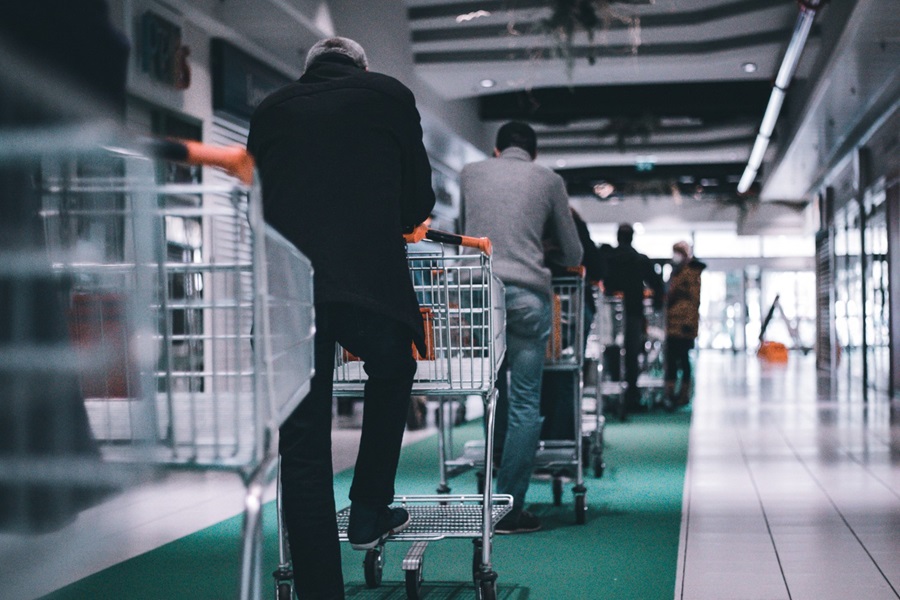We know that emotions have a strong influence on consumer decision-making.
Before COVID-19, according to Kantar's CX+ 2020, just 39% of people felt that grocery retailers made everything around shopping easy for them as customers. A third of people said that interacting with grocery brands leaves them with no positive feelings. Take a moment to think about this. This means that one in three people shopping your store, watching your content, or using your product feels, well… nothing.
This sounds like bad news for grocery retailers, but perhaps not. COVID-19 has done an unexpected thing. With an increased focus on survival, basic material goods have also increased in importance. And this has increased the importance of grocery retail. We also know that the emotional motivations driving purchasing have changed. Fear is driving different shopping behaviour, both in terms of what people buy, and how.
This is an opportunity for grocery retailers, but only if they rise to the challenge. At a time when emotions and stakes are high, the importance of leaving people with positive impressions is paramount. Memories created now will be deeper and more lasting. But retailers need to understand how to work with emotions and the human brain in order to build positive associations at this critical juncture.
The charming – and sometimes not so charming – quirks of emotion
At Kantar, we recognise that humans don’t make decisions in a vacuum. Motivational, situational and cognitive factors all play into the mix. Critically, we understand that the emotions and memories created from customer experiences, with a brand or in a category, can have a strong influence on future choices.
Circumstances around COVID-19 have altered the backdrop of everyday shopping. When before have customers worried for their safety upon stepping into a grocery store? Back in the good old days of 2019, what was the worst that happened? A rogue bag of potato crisps drop on one’s foot perhaps? A little tussle when pushing an unneeded litre of milk back on the rail? Hardly the type of thing to light up the amygdala, the brain’s threat centre. Today, shopping has become a futuristic game of forcefields to maintain adequate distancing. Ninety-seven percent (97%) of shoppers say that it is important that they see evidence of cleaning and sanitising efforts in-store. And 95% of shoppers say that it is important that accommodations are made in-store to ensure safe distancing. Hypervigilance is required, and it’s not fun anymore.
And here’s the problem with that for grocery retailers: the brain has a hard time knowing the difference between integral and incidental emotions in relation to decision making. Integral emotions are fundamental to whatever it is we are deliberating — be it anxiety over whether to buy an extra 500 grams of smoked ham for the ravenous teenagers in the household or joy when we see that our favourite brand of ice cream is on sale. By contrast, incidental emotions are what we feel as a result of nothing more than the whimsey of circumstance — we dropped our mobile phone on our way into the store cracking the screen, or we bumped into a favourite neighbour with whom we’ve been meaning to catch up. These accompanying, but unrelated emotions, can impact our experiences positively or negatively.
Fortunately for grocery retailers, we don’t drop our mobile phones every time we enter a store, but these days, we do feel threatened - at the very least we feel apprehension. And that’s not good news for grocery retailers, because even though COVID-19 is not their fault and most are doing a commendable job of serving the public, they may still reap the punishment of it from our brains.
This oft non-conscious processing could lead to negative sentiment around grocery shopping, and despite the stickiness of grocery geographic pull, could lead people to make difference future choices around food. At the very least, it may take time before customer satisfaction ratings return for supermarkets. According to Kantar's COVID-19 Barometer (Wave 3), 35% of people are avoiding superstores and malls and 32% report that shopping online now is a more positive experience than going in-store. We understand that people are avoiding supermarkets as much as possible.
When we understand the potential impact of emotions around customer experience in decision making, we can more effectively sway opinion and shift behaviour. Smart retailers will begin to address customer needs for positive in-store experiences. By actively fostering joy and delight, retailers have the potential to offset some the negative sentiments building up from recent stressors.
Brands can create competitive advantage by innovating customer experience in ways that meet emotional needs and build positive intuitive brand associations. Kantar’s CX+ 2020 shows us that brand preference scores increase dramatically when customers are happy with their most recent interaction. In fact, CX+ 2020 Grocery Retail analysis shows us that when customers are satisfied or delighted, brand preference increases almost 50 percentage points – a massive increase. The circumstances of COVID-19 are providing a new playing ground for earning preference. By harnessing an understanding of emotion towards CX innovation, retail brands have the opportunity to influence consumer choices with experiential interventions that work with the brain’s natural decision-making mechanisms… Not such bad news after all.

